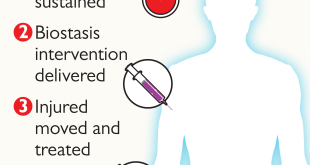Agriculture is a multibillion-dollar industry and one of the largest in the world, accounting for almost 1% of GDP in the UK, 6% in the US and 12% in Australia. It’s also set to be a growing industry, with the demand for food set to increase as the world approaches a population of eight billion.
Pests account for up to 40% of global crop production, according to the Food and Agriculture Organization of the United Nations. Plant diseases cost the global economy more than USD 220 billion per year, and invasive insects cost at least $70 billion.
Pesticides are currently used to treat crops, but there is increasing pressure to find alternatives due to the environmental impact. To create an early warning system, one method is to use integrated pest management (IPM). It monitors plants for insect and disease buildup rather than spraying them with chemicals, but it has so far proven unreliable and expensive.
Integrated Pest Management (IPM) is an effective and environmentally sensitive approach to pest management that relies on a combination of common-sense practices. Insects can damage crops throughout the growing season but seedlings and podding crops are most at risk. It is also important to assess any crop damage as soon as it is observed, and determine if further damage is likely to occur. Options available for the control of the particular insect pest can then be explored.
The UN’s Food and Agriculture Organization defines IPM as “the careful consideration of all available pest control techniques and subsequent integration of appropriate measures that discourage the development of pest populations and keep pesticides and other interventions to levels that are economically justified and reduce or minimize risks to human health and the environment.
IPM programs use current, comprehensive information on the life cycles of pests and their interaction with the environment. This information, in combination with available pest control methods, is used to manage pest damage by the most economical means, and with the least possible hazard to people, property, and the environment.
Not all insects, weeds, and other living organisms require control. Many organisms are innocuous, and some are even beneficial. IPM programs work to monitor for pests and identify them accurately, so that appropriate control decisions can be made in conjunction with action thresholds. This monitoring and identification removes the possibility that pesticides will be used when they are not really needed or that the wrong kind of pesticide will be used.
Before taking any pest control action, IPM first sets an action threshold, a point at which pest populations or environmental conditions indicate that pest control action must be taken. Sighting a single pest does not always mean control is needed. The level at which pests will become an economic threat is critical to guide future pest control decisions.
Often it may be difficult to identify the insects causing the particular damage. If this is the case, the next option available is to examine the symptoms of crop damage.
- Prevention
As a first line of pest control, IPM programs work to manage the crop, lawn, or indoor space to prevent pests from becoming a threat. In an agricultural crop, this may mean using cultural methods, such as rotating between different crops, selecting pest-resistant varieties, and planting pest-free rootstock. These control methods can be very effective and cost-efficient and present little to no risk to people or the environment. - Control
Once monitoring, identification, and action thresholds indicate that pest control is required, and preventive methods are no longer effective or available, IPM programs then evaluate the proper control method both for effectiveness and risk. Effective, less risky pest controls are chosen first, including highly targeted chemicals, such as pheromones to disrupt pest mating, or mechanical control, such as trapping or weeding. If further monitoring, identifications and action thresholds indicate that less risky controls are not working, then additional pest control methods would be employed, such as targeted spraying of pesticides. Broadcast spraying of non-specific pesticides is a last resort.
Photonic Nose
Experts from two Midlands universities are launching a new project to create a photonic ‘nose’ for monitoring crop pests and plant disease. Aston University is collaborating with Harper Adams University to research and develop light-based crop health monitoring technology. The findings were reported in the International Journal of Fruit Science.
Strawberries will be used in the Midlands research to put the new technology to the test. The fruit is worth Euro 350 million to the UK economy, but it is susceptible to potato aphid, which has the potential to wipe out an entire year’s harvest.
“However, most electronic noses use electrochemical sensors, which have issues with sensitivity, sensor drift/aging, and lack specificity.” “We intend to address this by leveraging the rapidly evolving technology of photonics—the science of light—while collaborating with scientists from other fields.”
The new project makes use of recent advances in photonics technology to analyze low levels of volatile organic compounds (VOCs) emitted by plants to determine their health. This, combined with machine learning hardware, makes the use of artificial intelligence in commercial settings feasible. Aston Institute of Photonic Technologies (AIPT) Professor David Webb believes that “better invertebrate pest and plant disease monitoring technologies will significantly help cut crop losses.”
“With the projected increase in global population, there is increasing pressure on the agricultural sector to achieve higher crop yields,” says Dr. Joe Roberts of Harper Adams University. Reducing crop losses within existing production systems will improve food security while consuming fewer resources.”
“We intend to form an interdisciplinary community of agricultural science, optical sensing, and machine learning experts to create novel plant health monitoring platforms that improve agricultural production by detecting hotspots of pest and disease,” he added.
References and Resources also include:
https://idstch.com/wp-admin/post-new.php
https://www.epa.gov/safepestcontrol/integrated-pest-management-ipm-principles
 International Defense Security & Technology Your trusted Source for News, Research and Analysis
International Defense Security & Technology Your trusted Source for News, Research and Analysis

